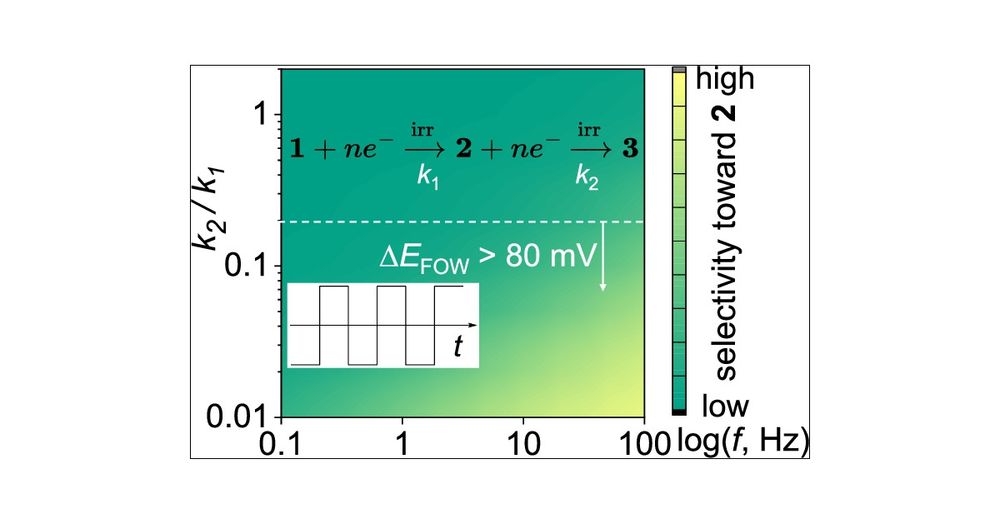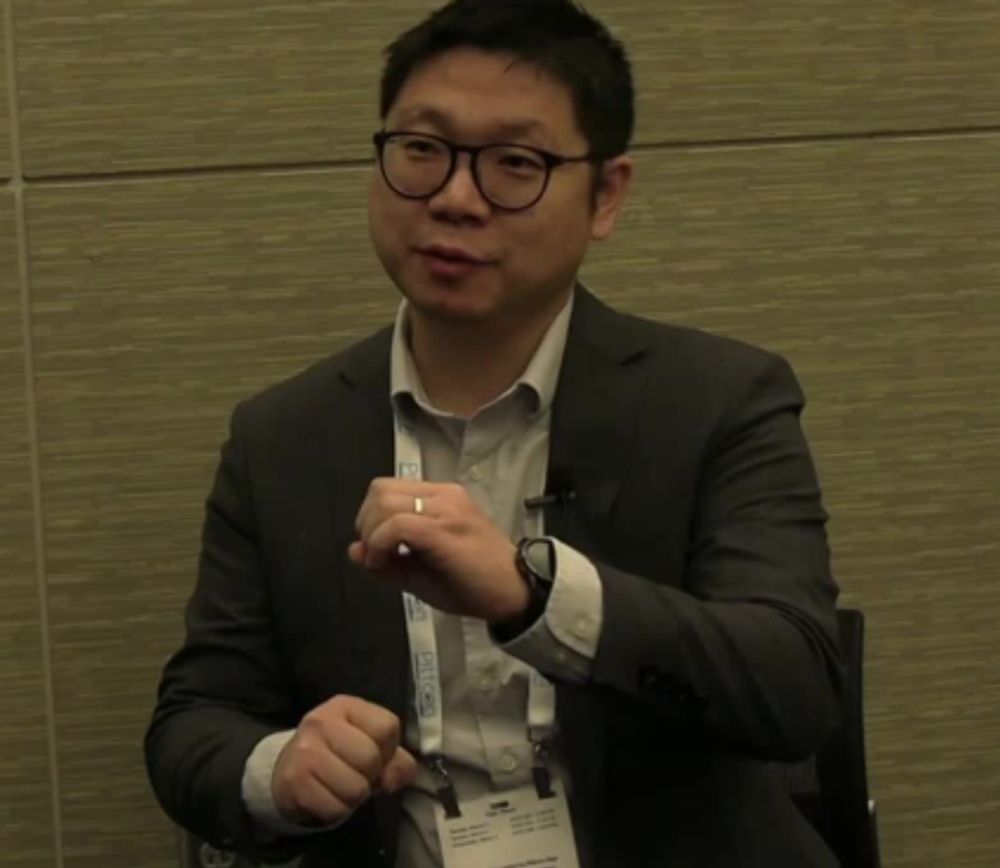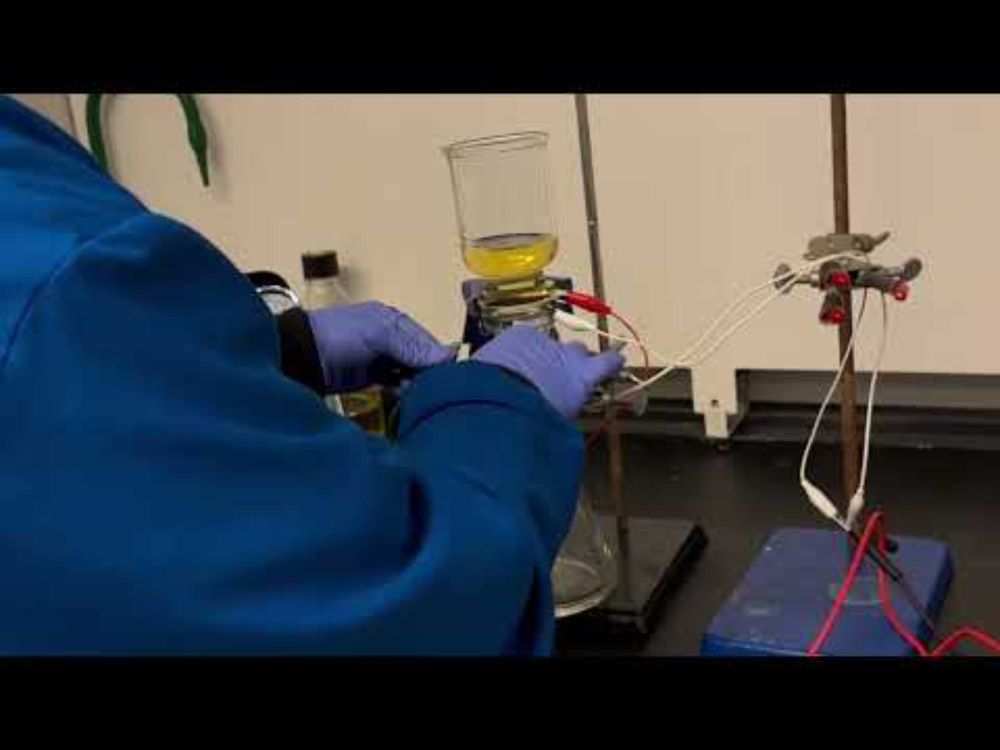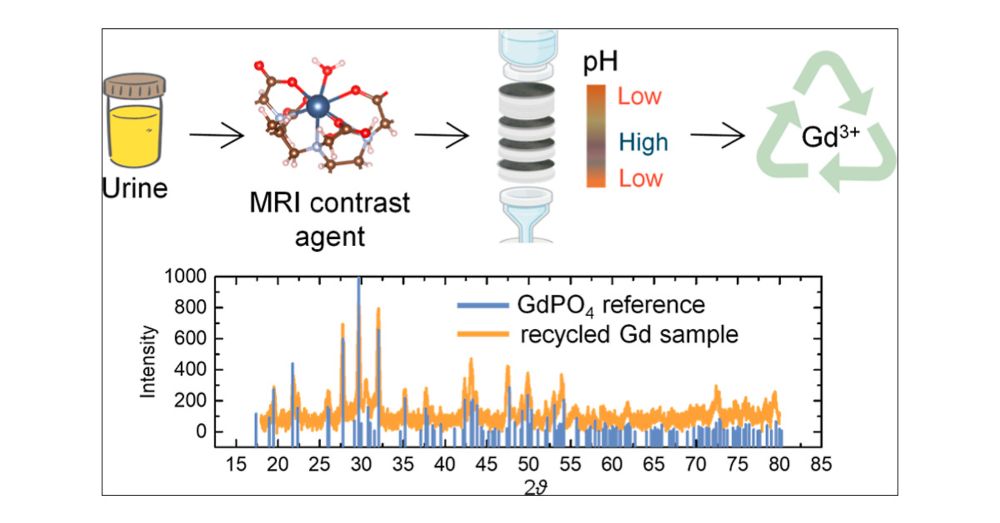
Check out our new paper on Electrochemical Trifluoromethylchlorosulfonylation of Alkenes via Copper‐Mediated SO2Cl Radical Transfer @AdvSynthCatal in collaboration with @Sanford_Lab
advanced.onlinelibrary.wiley.com/doi/10.1002/...
@utahchemistry.bsky.social @NSF_CSOE
27.10.2025 15:17 — 👍 2 🔁 1 💬 0 📌 0

In situ environmental TEM analysis reveals the hydrogen insertion initiated at the GB sites, further supported by DFT results. Great teamwork @utahchemistry.bsky.social PNNL and Argonne! Congrats to all the authors! Thanks, Department of Energy, for funding support!
10.10.2025 15:17 — 👍 1 🔁 1 💬 0 📌 0

Congratulations to the recipients of this year's Distinguished Alumni Award, Dr. Hyung Kyu Shin, Dr. Michael Hunnicutt, and Dr. Sally Hunnicutt!
Read more about the event and each of our awardees:
www.chemistry.utah.edu/awards/2025-...
02.10.2025 20:46 — 👍 0 🔁 2 💬 0 📌 0

We addressed this issue by continuously regenerating defective Ag under AC electrolysis to prevent catalyst deactivation and control the formation of reactive chemical species, achieving the selective and continuous electrosynthesis of aminopyralid for over 50 days.
30.09.2025 15:21 — 👍 0 🔁 0 💬 0 📌 0

The loss of selectivity is caused by both the structural evolution of the Ag catalyst, as characterized by #4D-STEM, and the in situ formation of reactive species (ClO–, NH3, and NO2–).
30.09.2025 15:21 — 👍 0 🔁 0 💬 1 📌 0

Dehalogenation is a critical process in the chemical industry but still faces challenges, including catalyst deactivation, low product selectivity, and limited operational stability. An example is the synthesis of aminopyralid (2) via #echem dechlorination of picloram (1).
30.09.2025 15:20 — 👍 0 🔁 0 💬 1 📌 0

Celebrate our three @jacs.acspublications.org papers in a row with the awesome group members @utahchemistry.bsky.social ! The third one will be online soon. Stay tuned! #Pumping more great chemistry!
25.09.2025 03:46 — 👍 1 🔁 1 💬 0 📌 0


Our superstar graduate student @griffynsgro1.bsky.social
, and postdoc Mike Pence, are bringing automation to the quantitative analysis class @utahchemistry.bsky.social ! Thanks @rescorp.org @NSF for funding support! #modernize analytical chemistry labs!
19.09.2025 04:05 — 👍 3 🔁 2 💬 0 📌 0

Molecular structures made from crocheting yarn (like this caffeine structure) were on display at the Chemistry Crochet Social Hour sponsored by the NSF Center for Synthetic Organic Electrochemistry, where attendees had a chance to make their own creations.

Poster presentations take place throughout the entire conference, with many conference attendees stopping by between sessions.

Conference attendees pass through the main entrance of the Walter E. Washington Convention Center to get to their next activity.

Conference attendees casually chat and play a game of giant Jenga.
Molecular structures made from crocheting yarn were on display at the Chemistry Crochet Social Hour sponsored by the @nsf-csoe.bsky.social, where attendees had a chance to make their own creations. cen.acs.org/acs-news/acs...
#ACSFall2025 #chemsky
21.08.2025 15:23 — 👍 7 🔁 4 💬 0 📌 0
Apply to us!
22.08.2025 00:02 — 👍 1 🔁 0 💬 0 📌 0
A FUN EVENT!
22.08.2025 00:01 — 👍 3 🔁 0 💬 0 📌 0
Congrats Mike! A true rising star in electrochemistry!
05.08.2025 04:22 — 👍 7 🔁 0 💬 0 📌 0
Great collaboration with the White Group @utahchemistry.bsky.social @nsf-csoe.bsky.social ! Thanks the funding support from @NIH and @NSF!
21.07.2025 13:45 — 👍 1 🔁 0 💬 0 📌 0
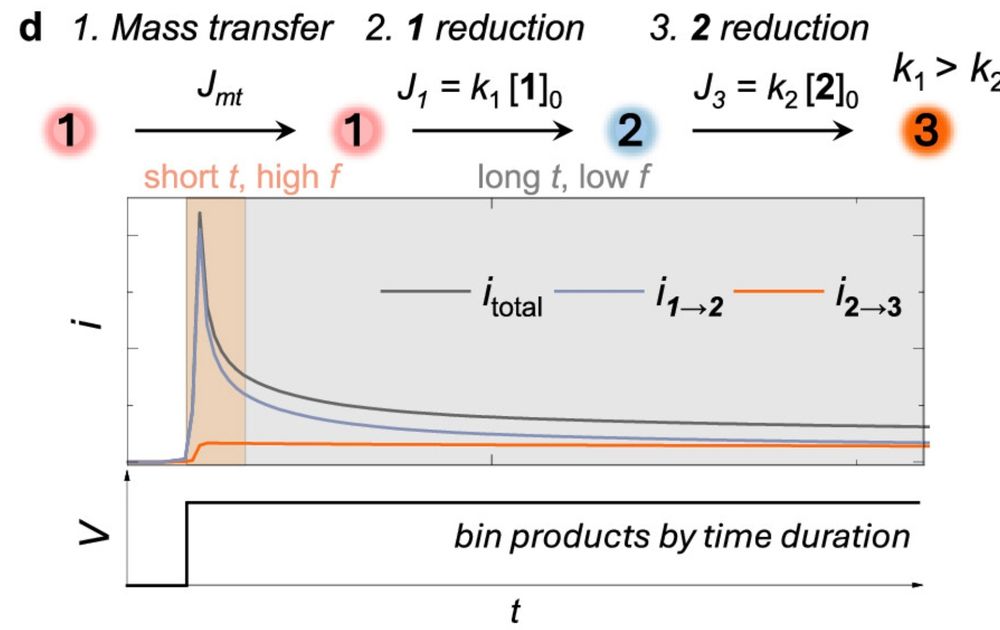
The selectivicty arises from binning the products by time duration during AC electrolysis. At short times, the 1st step is fast than the 2nd step due to fast kinetics and sufficient supply of reactant. At long times, the 2nd catches up with the 1st due to concentration change.
21.07.2025 13:43 — 👍 0 🔁 0 💬 1 📌 0
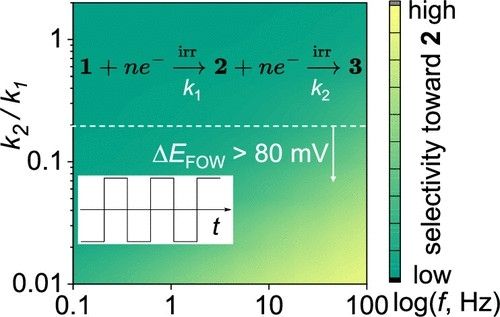
The key take-home message is when the potential difference at the foot of the wave between 1-->2 and 2--->3 is larger than 80 mV, AC electrolysis can achieve selectivity toward 2.
21.07.2025 13:43 — 👍 0 🔁 0 💬 1 📌 0
Thanks @rescorp.org for the support and look forward to working with Jim and Glen! @utahchemistry.bsky.social
11.06.2025 15:05 — 👍 3 🔁 1 💬 0 📌 0


Welcome @griffynsgro1.bsky.social and @mitch-horn.bsky.social from @waynestatechem.bsky.social to @utahchemistry.bsky.social for summer research!
07.05.2025 21:31 — 👍 4 🔁 1 💬 0 📌 0

And having dinner the legendary Profs. Joel Harris and Henry White @utahchemistry.bsky.social !
22.04.2025 22:50 — 👍 1 🔁 0 💬 0 📌 0
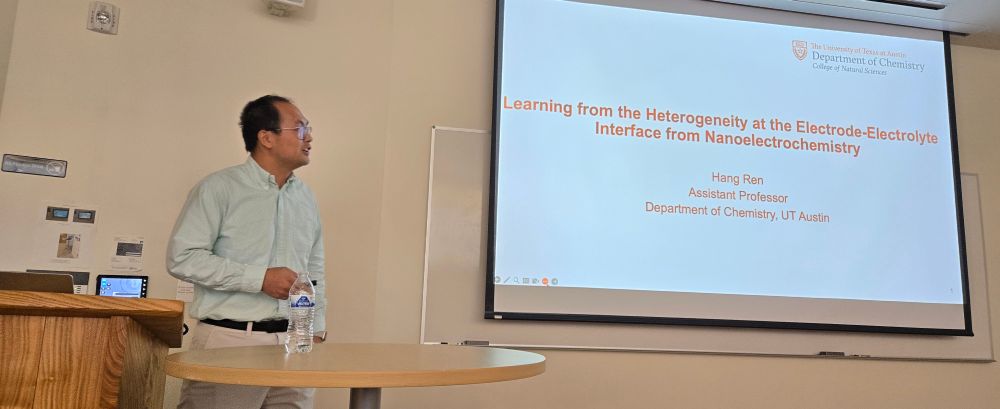
Great seminar by @hangren.bsky.social from @utaustin.bsky.social ! Thanks for visiting us!
22.04.2025 22:48 — 👍 1 🔁 0 💬 1 📌 0
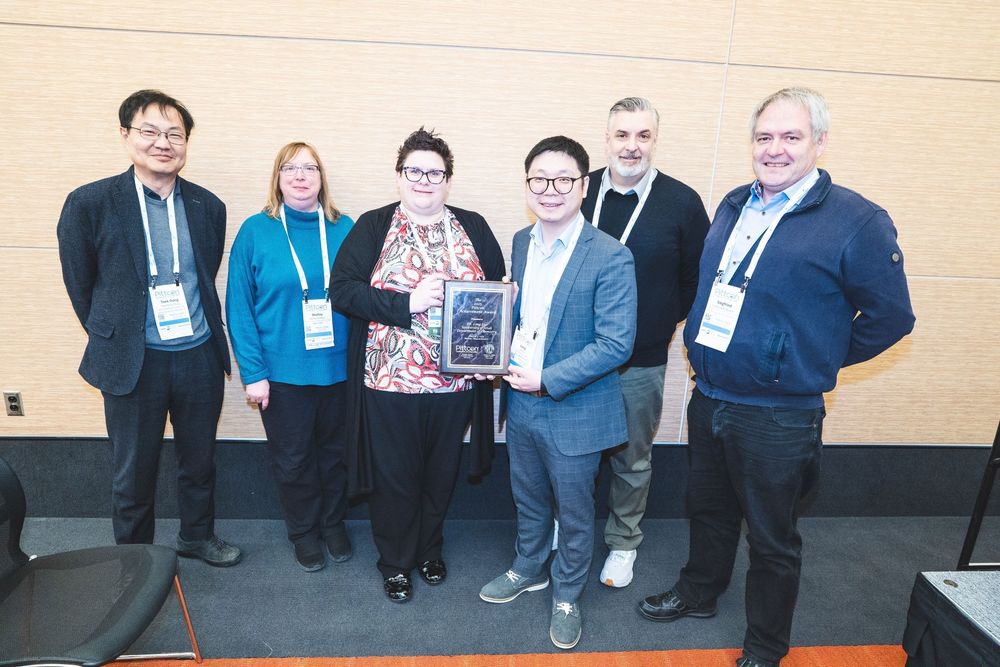
It is my great honor to receive the Pittcon Achievement Award! Thanks to all the current and former students for their hard work @waynestatechem.bsky.social @utahchemistry.bsky.social ! Also, thanks to
@minteerlab.bsky.social , TD, Siegi, and Lane @bakergrp.bsky.social for the continued support!
14.03.2025 21:44 — 👍 7 🔁 0 💬 0 📌 3

A great electrochemistry minisynposium today @utahchemistry.bsky.social with Prof. TD Chung from Seoul National U and the White and @minteerlab.bsky.social !
06.03.2025 03:34 — 👍 4 🔁 1 💬 0 📌 0
Abstract Submission | Pacifichem 2025
The 2025 International Chemical Congress of Pacific Basin Societies will be held December 15-20, 2025. Pacifichem 2025 will be the ninth in the series of successful cosponsored scientific conferences ...
Researchers working on #advanced #materials for #sensing, do not miss this opportunity to attend a focused session, “Symposium on Advances in Gas Sensing Material Development (#ANA004),” at #Pacifichem 2025. Abstracts are accepted until April 2.
pacifichem.org/scientific-p...
27.02.2025 20:38 — 👍 2 🔁 0 💬 0 📌 0

Challenges in PFAS Postdegradation Analysis: Insights from the PFAS-CTAB Model System
Per- and polyfluoroalkyl substances (PFAS) are synthetic chemicals widely used for their oil and water-repellent properties. Their environmental persistence and potential health risks have raised significant concerns. As PFAS degrades through remediation or natural processes, they form complex mixtures of the original chemicals, transformation byproducts, and degradation additives. Analyzing PFAS after degradation presents analytical challenges due to possible chemical and physical interactions, including ion pairing, micelle formation, and complexation. These factors can significantly impact the precision and accuracy of PFAS measurements, yet they are often overlooked in PFAS degradation studies. In this work, we demonstrate that with the addition of ppb-level cetyltrimethylammonium bromide (CTAB), a cationic surfactant used in PFAS plasma-based degradation, the PFAS calibration curve linearity, sensitivity, and reproducibility are severely compromised. Isotopically labeled internal standards cannot fully correct these issues. Furthermore, the standard EPA methods 537.1, 533, and 1633 could not accurately recover PFAS concentrations in the PFAS and CTAB mixtures, with severe matrix effects observed for longer-chain and nitrogen-containing PFAS. Among these methods, Method 1633 is currently the most suitable option for postdegradation analysis. Method 1633 showed the lowest CTAB interference because this method used another weak ion pair additive, formic acid or acetic acid (in commercial lab analysis), to acidify the sample before LC–MS/MS analysis and added an isotopically labeled internal standard. For future PFAS degradation studies, we recommend systematically evaluating the matrix effect on the PFAS quantification using a recovery matrix to validate the analytical methods before use.
The third paper of 2025: Challenges in #PFAS Postdegradation Analysis: Insights from the PFAS-CTAB Model System at ACS Meas. Sci. Au @UtahChemistry @waynestatechem.bsky.social ! We discuss the interference of CTAB on the PFAS quantification and the possible solutions.
pubs.acs.org/doi/10.1021/...
22.01.2025 16:34 — 👍 2 🔁 0 💬 0 📌 1
YouTube video by The Luo Lab at Utah
Electrochemical filtration of gadolinium based contrast agents to recycle gadolinium
Here are the @googleyoutube.bsky.social instructions for the key experiments in this paper.
www.youtube.com/watch?v=O-tG...
20.01.2025 16:14 — 👍 0 🔁 0 💬 0 📌 0
Research group of the Institute of Organic Chemistry
@univienna - https://mateoslab.com
Senior Editor for Nature Communications. Interested in all things materials chemistry, methods for energy and environmental applications, flaky pastries and long runs.
Research Fellow at Monash University, Melbourne | Membrane technologies, 2D materials, Hydrogen purification, Fuel cells and Water electrolysis
chem phd @uchicago | wuttig lab 🐸 | ndseg fellow | ucla '23 | he/him
leveraging self-assembly on electrified interfaces for catalysis ⚡
Photoelectrochemistry and 3D printing
Associate Professor of Chemistry at Whitman College. Nanocrystal Synthesis & Lab Automation. Opinions my own. HendricksLab.com
Supporting Young Scientists Today for Tomorrow's Breakthrough Discoveries
beckman-foundation.org
RCSA supports early career researchers in the physical sciences (astronomy, chemistry, physics) at colleges and universities in the U.S. and Canada. Founded in 1912, RCSA is the nation’s oldest foundation dedicated solely to science.
Computational and theoretical chemistry, solutions, interfaces, separations science, applied math and DS. Opinions are my own. clarkchem.com chemnetworks.com
Using quantitative, data-driven approaches to make synthetic chemistry more predictable. Phase II CCI #NSFFunded
🌐 https://ccas.nd.edu/
📷 https://www.instagram.com/nsf_ccas/
A leading chemistry journal by Chinese Chemical Society and Elsevier @elsevierconnect.bsky.social, covering the whole field of chemistry. IF = 9.4 (2023). Posted by @zhichangliu.bsky.social on behalf of the editorial office.
t.co/XTvPAyP30M
PhD student in the Noël research group, University of Amsterdam
Assistant Professor 🔋⚡️🤖🧪, Department of Chemistry - Ångström Laboratory, Uppsala University, Sweden. Interested in battery interphases, operando characterizations, robotics, and mechanics. https://leitingzhang.com
Electrochemist. Professor in the Department of Chemical Sciences and PI in the Bernal Institute at the University of Limerick (UL), Ireland. 🇮🇪 Views are my own.
https://www.scanlonelectrochemlab.com/
Assist. Prof. Electro–Analytical/Material Chemistry@SUNY-Oswego.
Ph.D.@UWO, PDF@CornellChem and QC-CUNY.
Nanoelectrochemistry, Electrogenerated Chemiluminescence, Synthesis of APMNCs, Single-particle,single-molecule (fluorescence) microscopy.
he/him.
Assistant Professor at Wayne State Department of Chemical Engineering and Materials Science. 🌈 soft materials, soft X-rays, and thin films
(Views are my own)
University of Utah Department of Chemistry
https://linktr.ee/uofu_chemistry
We are the Mayer lab at Yale University. We love PCET, charge balance, and are addicted to square schemes!
#jimisrad | student run | @yalechem


















